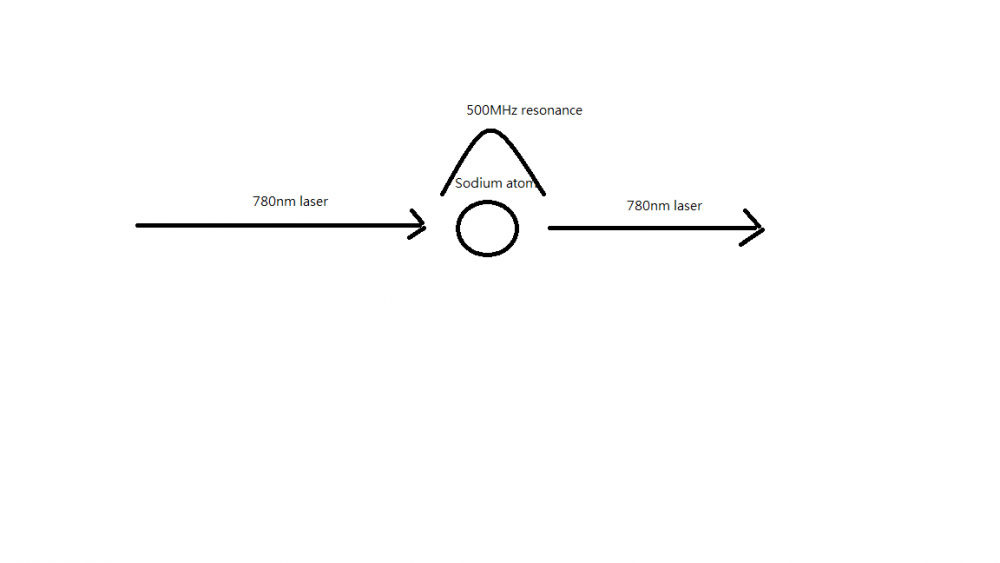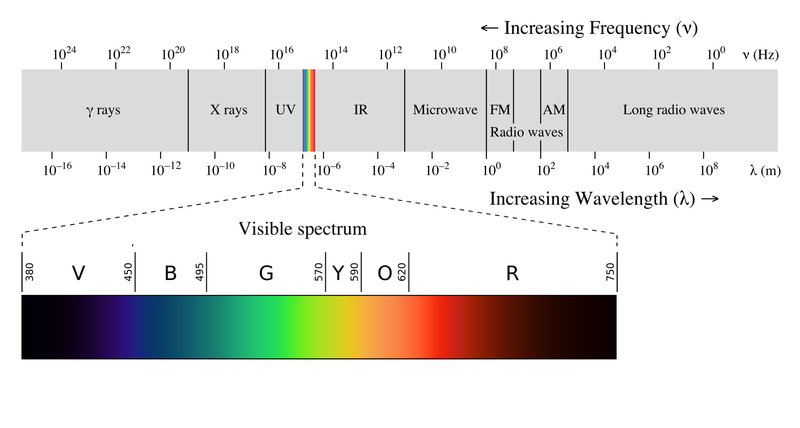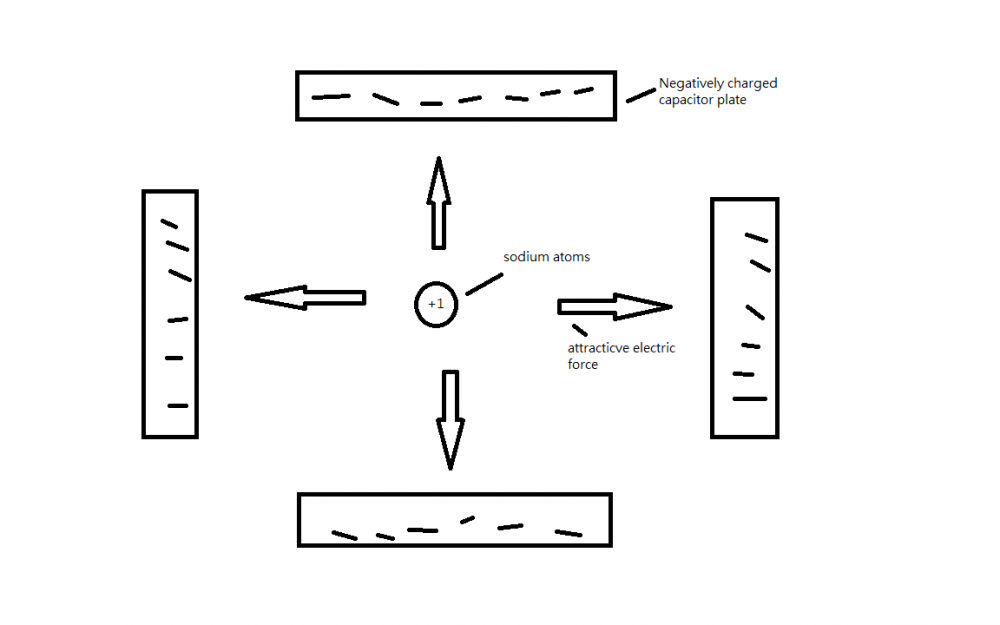Everything posted by fredreload
-
I want to create a 1 meter BEC
I am cooling a 1 meter BEC so I prefer flash lights @@, although I might go with x rays because it has a higher frequency(both can be produced in large quantities). Microwave would not work, you need something shorter than 780nm to keep the atoms in place. Microwave only has a milimeter wavelength(see below).
-
I want to create a 1 meter BEC
Well, visible light/flash light is 780nm, precisely the range for lighting up rubidium atoms. Although flash lights are not as precise and coherent than lasers. But you could create a magneto-optic trap with flash lights. Alkali atoms also absorb a wide range of electromagnetic radiation including x rays. You are trying to stop both the rotation and translation from 6 sides. Imagine tapping a balloon from 6 sides. Ya, but the amount of photons it absorbs varies with the frequency of light. I got an article here to prove just the case, and I will make a summary below. "The absorbed radiation is quickly emitted by the atom, either through stimulated emission or spontaneous emission. Stimulated emission occurs in the same direction as the absorption, and the recoil effect accelerates the atom back to its original velocity so that the absorption and emission effects cancel. Spontaneous emission, on the other hand, results in a random emission of a photon (and hence recoil of the atom) in any direction, with the net effect that, on average, the atom slows down in the direction of the absorption.z For a typical sodium atom, the initial velocity in the atomic beam is about 1000 m·s−1 and the velocity change per photon absorbed is 3 cm·s−1. This means that the sodium atom must absorb and spontaneously emit over 3 × 104 photons to be stopped. It can be shown that the maximum rate of velocity change for an atom of mass m with a photon of frequency v is equal to hv/2mc where h and c are Planck's constant and the speed of light, and τ is the lifetime for spontaneous emission from the excited state. For sodium, this corresponds to a deceleration of about 106 m·s−2. This should be sufficient to stop the motion of 1000 m·s−1 sodium atoms in a time of approximately 1 ms over a distance of 0.5 m, a condition that can be realized in the laboratory." https://www.sciencedirect.com/topics/chemical-engineering/laser-cooling?fbclid=IwAR3ChHOUYoMag3P9vbq4Y3Wz-YzXWbqAzx7-KQOSCJ_zNnvG1ioJY2BDWLQ
-
I want to create a 1 meter BEC
The atoms or if I use as an example the water molecules pretty much absorb light of all wavelength ranging from radio wave to gamma ray(perhaps), the important part is you want to lock the atom in place, like trying to stop a spinning globe in place, so if the wavelength is too long, like if I touch the globe once every second, it would not stop as oppose to using an x-ray(the shorter the wavelength the better), the thing is it needs to be applied in equal from six directions(if not 8), or else it would get push around in the opposite direction of the laser. So alignment is very important. If you decide to switch to incandescent/black body radiation to light up the atoms it could work, but you still need good lasers' alignment from all directions(so you need some type of filter to get a coherent light beam). Wish you luck
-
I want to create a 1 meter BEC
Why not?
-
I want to create a 1 meter BEC
Well, if I shown a flash light in 6 directions with sodium atoms inside a vacuum in a dark room would it work @@?
-
I want to create a 1 meter BEC
Ya, else there would be CoM motion. Have you tried something of a higher frequency like x-ray? It is like trying to stop a spinning globe on 6 sides.
-
I want to create a 1 meter BEC
Hmm, my guess for the term atomic resonance is that the atom has to be locked in it position first, then apply resonance frequency say 500MHz to slow it down. For example, MRI(magnetic resonance imaging), there is also the term resonance in it, but since the water molecules are already locked inside the body, it becomes easier to lined them up with the magnetic field and apply the radio wave frequency afterward. Same goes for the magneto-optical trap, the 780nm laser is there as a doppler shift to counteract the bulk majority of the momentum of the gas particle, also the other side of the laser, leaving 500MHz acting as its resonance frequency. Let me know if my assumption is correct. So I could have 780nm on one side of the laser and the other side laser has 780nm-500MHz to work with(I know one is wavelength and one is frequency, but just bear with me).
-
I want to create a 1 meter BEC
My bad @@, I will answer this myself, with a supporting article(no procedure though it is pop sci). https://physicsworld.com/a/taming-light-with-cold-atoms/ "What we did was to cool sodium atoms to just 50 billionths of a degree above absolute zero and then illuminate them with a carefully tuned laser beam. This “coupling laser” changed the optical properties of the atoms so dramatically that when a separate laser pulse was sent through the cloud of atoms, its speed was reduced by a factor of some 20 million. The size of the light pulse was also affected, shrinking from 1 km in free space to only 0.05 mm inside the medium. The pulse was then completely contained within the 0.1 mm long, cigar-shaped ultracold-atom cloud." It seems two lasers are used, one to change the optical property and another one as light storage. This is a bit different from the rubidium method. P.S. I am calling it a day. I will drop by to learn more science from you guys in a bit.
-
I want to create a 1 meter BEC
No, gonna take a break and look into fusion/solar flare next P.S. How much photons can the presumed laser cooled sodium ions store?
-
I want to create a 1 meter BEC
O, that makes sense @@, I guess we need a few big magnetron laser for this one if we want a 1 meter BEC P.S. Thanks for clearing it up for me
-
I want to create a 1 meter BEC
So, when a 780nm laser hits a sodium gas item it would create a 500MHz resonance at the center of the atom @@? I am not getting the picture but I will try to draw it. You can correct it for me anyway you want
-
I want to create a 1 meter BEC
Well Swanson sir, what I don’t get is why do you need a nanometer laser to cool a gas atom that has an absorption spectrum of 500MHz which is radio wavelength? I might have missed something and I apologize if I do @@ Not getting this part See 500MHz is radio wave, did I miss something? I see, so you are saying if I apply a 500MHz frequency it would subject to a lower frequency at the gas atom center.
-
I want to create a 1 meter BEC
Just coming from the newbies point about view about the radio wave @@. If that does not work then might have to resort to the magnetron laser to get enough juice to power up the laser. But I'd give the radio wave method a shot before that happens
-
I want to create a 1 meter BEC
Hmm, I still think the radio wave technique is worth a shot before I switch to big lasers. Just 1 meter of gas chamber with 6 antennas emitting 500MHz radio wave. If you are worried that it would get re-thermalize than perhaps a magnetic field can be used to encage the gas ions.
-
I want to create a 1 meter BEC
Ya, I see that the point of the magneto-optical trap is to have the gas ions absorb the photons but not to trap it in a magnetic field, you are right. P.S. Well, how would you design a 1 meter BEC? With bigger lasers? P.S. Bigger lasers sound good
-
I want to create a 1 meter BEC
Well, I am pretty much trying to recreate this thing @@, the magneto-optic trap (https://en.wikipedia.org/wiki/Magneto-optical_trap) P.S. Tell me that is different from my setup
-
I want to create a 1 meter BEC
Kinda similar meaning the Earnshaw theorem also applies for your magneto-optic trap idea which is using magnetic field. " It is usually referenced to magnetic fields, but was first applied to electrostatic fields. " Wikipedia I changed it to a plus so the plates are now exerting a push force to the sodium ions(not an attraction force), which should keep the atoms in the center.
-
I want to create a 1 meter BEC
You can't just say Earnshaw's theorem is not in favor of my electric field idea, but is in favor of the magneto-optic trap idea(which is kind of similar but using a magnetic field in this case). Well what it does prove is that only the push force works but not the pull force = =, thanks for the correction, I will use the positive electric field plates in this case = =. This is from Wikipedia about the Earnshaw's theorem: "Informally, the case of a point charge in an arbitrary static electric field is a simple consequence of Gauss's law. For a particle to be in a stable equilibrium, small perturbations ("pushes") on the particle in any direction should not break the equilibrium; the particle should "fall back" to its previous position. This means that the force field lines around the particle's equilibrium position should all point inwards,"
-
I want to create a 1 meter BEC
A capacitor got a positive and a negative plate. I align 4 negative plate(top, down, left, right) with sodium atoms situated in the middle. Sodium atom is an ion with a +1 charge, so it will get pulled by the four capacitor plates. Thereby trapping the atoms at the center, if it still spins I will apply an extra radio wave to reduce the CoM movement. P.S. The electric force is also much greater than the magnetic one if the magneto-optical trap is not doing this already.
-
I want to create a 1 meter BEC
Sodium atom are well, mostly ions cuz of salt you know @@(easily losing a valence electron in the outer shell). Now is just a matter if it can trap light(photons). Ionno what frequency range of light it traps and the temperature it needs to achieve sodium ions BEC.
-
I want to create a 1 meter BEC
So to trap the sodium atoms. I would create 4 negative capacitor plates(top, down, left, right). That is because if you only have top, down capacitor plates the sodium atoms can still spin sideways. Now after the sodium atoms are situated, you use a radio wave to reduce the remaining CoM motion, thereby reducing the temperature.
-
I want to create a 1 meter BEC
Just helping a troubling kid trying to pass the physics class lol. Hmm, in this case you need something with a magnetic moment on two sides. Ionic bond? Man you guys are crazy. Capacitor?
-
I want to create a 1 meter BEC
Well if the atoms are lined up with the magnetic field then it has no movement(unless it jiggles around, i dunno), then what is left is that the atom is spinning, if you reduce the spin then I assume you lower the temperature. That is the same concept as laser cooling, essentially you are putting the atoms to rest. I mean for laser cooling you also stop the spins right? Or just the movement? P.S. I think the magneto trap does exert a magnetic field on the sample cloud, but the magnetic field strength would be much higher in this case. I think I will go with attraction of two magnetic coils on each side to pull the rubidium atoms, well it depends on the tesla strength of the magnet(might have to do with the jiggling too). Which is really hard to increase for the setup. P.S. I will have to check at which temperature the BEC formation begins(which is 300nk) P.S. So I have been running the same thing, the magneto trap does exert a magnetic field on the sample, with a much higher field strength
-
I want to create a 1 meter BEC
No you are trying to cool down the precession with atom's rotational frequency absorption of electromagnetic radiation, IOW make the atom spin slower. Laser cooling does not cause confinement, but your magneto-trap does, it exhibits zero magnetic field at the center, so the atoms are not lined up but confined. A lion in a cage can move around. A lion lined up in a cage cannot move around. Ya well professor Swansnot @@. Well the point a about a 2-D magneto-optic trap is I am gonna use a magnetic coils, not lasers, so it has a wider coverage. But ya maybe opposite polarity so they stay at the center, good funnel
-
I want to create a 1 meter BEC
I don't get the magneto trap, it seems to trap(confined) the atoms rather then line them up with the magnetic field. P.S. I'd build a mechanism to line up the atoms instead



